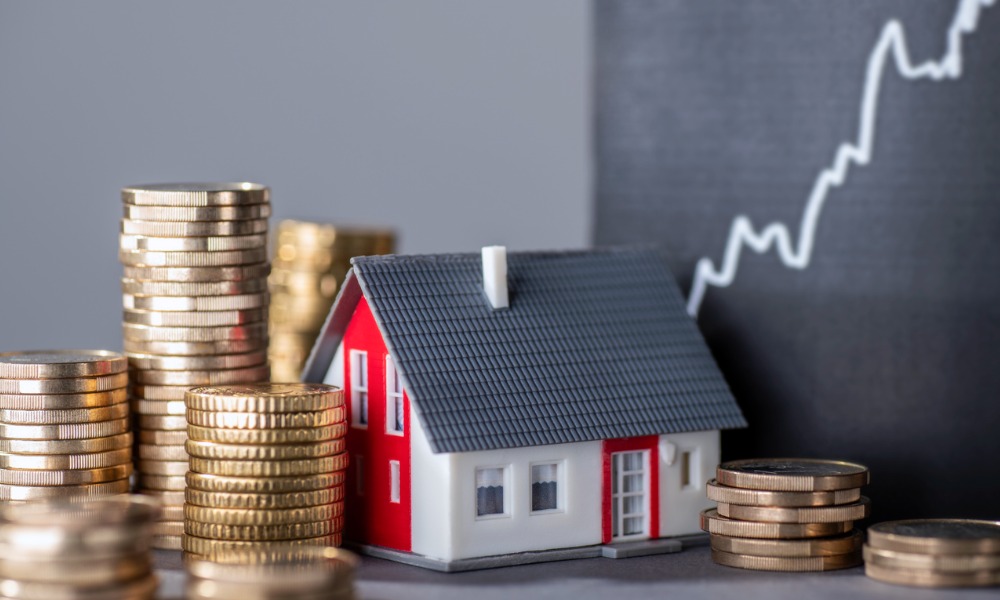Figures show a resilient housing market

The average house price in the UK was £288,000 in June, increasing by 1.7% over the past 12 months, the Office for National Statistics (ONS) has reported.
While June 2023’s average UK house price was around £5,000 higher than a year ago, it was still £5,000 below the recent peak recorded last year. The 1.7% rise was also lower than the 1.8% annual house price growth of the previous month.
Average house prices increased over the year by 1.9% to £306,000 in England, by 0.6% to £213,000 in Wales, and by 2.7% to £174,000 in Northern Ireland. Little changed in the house prices in Scotland, which recorded an average of £189,000.
Latest house price data supplied by HM Land Registry, Registers of Scotland, and Land and Property Services Northern Ireland showed that the North East had the highest annual percentage change of all English regions in the 12 months to June at 4.7%, while London saw the lowest at -0.6%.
Average UK house prices increased by 1.7% in the 12 months to June 2023 (provisional estimate).
— Office for National Statistics (ONS) (@ONS) August 16, 2023
This is down from a revised 1.8% in May 2023.
➡ https://t.co/QqoegrA0yo pic.twitter.com/ztHceTUgvs
“Annual house price inflation, measured using final transaction prices, slowed again in June, but the fall was gentler than we have seen in previous months,” said Aimee North, head of housing market indices at the Office for National Statistics.
Meanwhile, in the UK private rental market, rents paid by tenants rose by 5.3% in the 12 months to July 2023, up from 5.2% in the 12 months to June.
During the same period, annual private rental prices increased by 5.2% in England, 6.5% in Wales, and 5.7% in Scotland.
Within England, the highest annual percentage change in private rental prices in the 12 months to July 2023 was in the West Midlands, Yorkshire and the Humber, and London, at 5.5%, while the North East saw the lowest at 4.6%.
“There was another record annual increase for UK rents in the latest month,” North noted. “London rental prices rose steeply to their highest annual rate since records began in 2006.”
Emma Cox, managing director of real estate at Shawbrook, said July’s modest increase in house prices saw the market yet again defying expectations in the face of fluctuating rates, and a slowdown in activity.
“For real estate professionals, the current phase could be an opportune time to explore new possibilities,” she added.
“With the property market overall less busy, a reduction in competition from owner occupiers will create a favourable environment for landlords to consider expanding portfolios. With a robust demand in the rental market, landlords might consider diversifying into higher-yield options like houses in multiple occupation, which could in turn contribute to an increase in available properties for rent.”
Nicky Stevenson, managing director at Fine & Country, added that while house price growth was cooling, the fall in inflation sparked hopes that the economy was turning a corner, and bolstering the chances of the property market experiencing a soft landing.
“The biggest barrier to sales is the cost of mortgages, but competition for borrowers has seen lenders drop rates in recent days, which may trigger another flurry of activity,” Stevenson said. “The Bank of England may also be nearing the point where it presses pause on further base rate hikes, which would bring greater stability to mortgages and, in turn, promote more confidence in the property market.
“The resilience of the housing market can partly be attributed to a pool of motivated buyers who continue to bid for reasonably priced properties.”
Any thoughts on this latest ONS release of house and private housing rental prices data? Tell us by leaving a comment in the discussion box at the bottom of the page.



